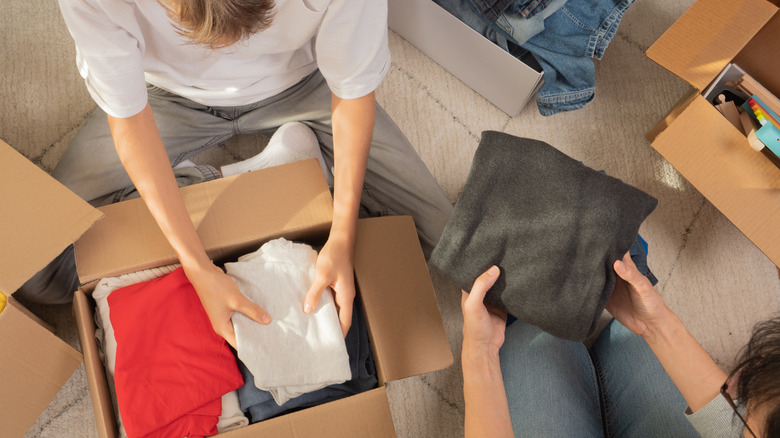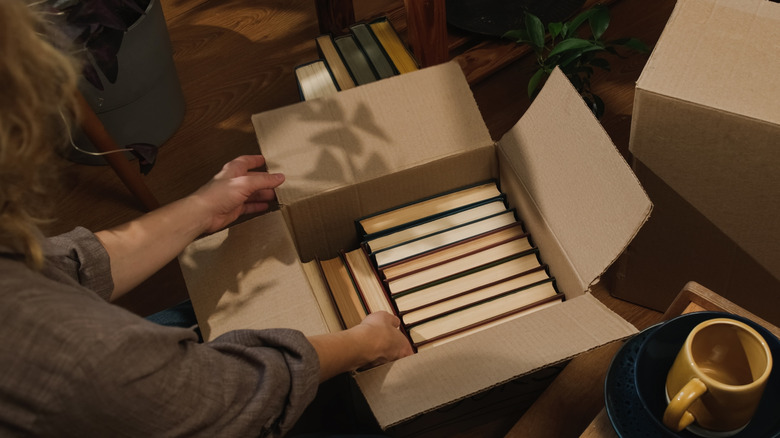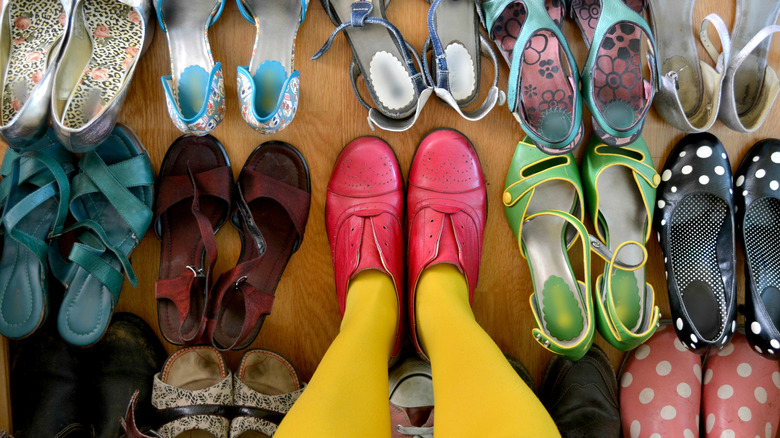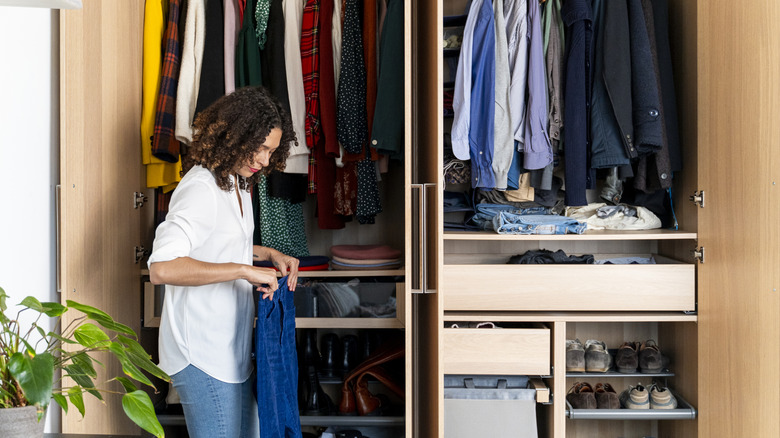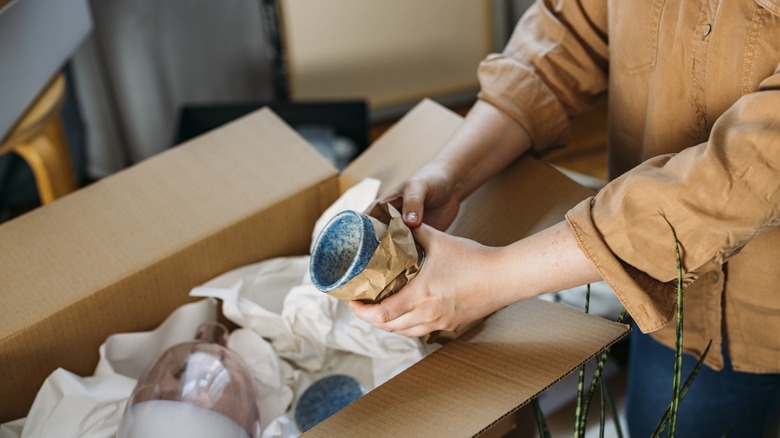Moving Checklist: Declutter These Collections Before You Pack
Packing for a move can feel overwhelming, especially when you realize just how much stuff you've accumulated over the years. Before you start boxing everything up, take a moment to declutter what you've collected over the years and lighten the load. It will make moving and packing much easier and will get you a fresh start in your new home!
Before diving into the checklist, here are a few helpful tips to get started. First, start early. Sorting through everything takes time, especially when you're decluttering. Rushed decisions can lead to mistakes — or a job half done. As soon as you know you're going to be moving, create a schedule and tackle one room at a time, methodically working your way through.
Next, decide what to do with the items you're letting go. Anything in poor condition can be thrown out or recycled, but many things deserve a second life. Organizations like The Salvation Army, Goodwill, and local charities gladly accept donations. Some have convenient drop-off bins, while others even offer free pickups. You can try to sell nicer items on platforms like Facebook Marketplace, eBay, or Craigslist if you have time, and put the savings towards your moving costs. That's yet another reason to start early!
Letting go of book collections
Start the decluttering process with your book collection. Books often hold sentimental value, whether it's the ones you've loved or those that were given to you as gifts. But let's be honest, not every book on your shelf falls into these categories. They take up a lot of space, they're heavy, and you're probably not going to reread most of them.
Begin by setting aside your all-time favorites — books you love to display, enjoy discussing and might lend to friends or family. Consider this your "favorites shelf," or the collection you'll want to take with you wherever you go. Then, take a closer look at the remaining books with decluttering in mind.
The great thing about letting go of books is how easily they can find a new home! Consider donating them to a local library or selling them to a second-hand bookshop. Many communities also have Little Free Libraries: small boxes placed on streets where people can leave or take books. Finally, there are also plenty of charities like book banks that will take children's books off your hands, even if they're used.
Sorting through toiletries before you start packing
Before you move, take some time to go through your toiletries. Empty out your bathroom storage cabinet and sort through bottles of lotion, makeup, shaving creams, and other items. A helpful guideline for decluttering is the "one-year rule": if you haven't used something in a year, it's time to toss it. That's also true for those bath salts or face masks you got as a birthday gift years ago.
Be sure to check expiration dates, too. Makeup and skincare products have surprisingly short lifespans. For example, liquid eyeliner and mascara should be replaced every three months, while face products like concealer or foundation can last up to a year. If that liquid lipstick from 2016 is still sitting in your drawer, it's time to let it go.
Next, think about what you actually need to bring to your new home. If you've got a giant shampoo bottle with just a few drops left, why waste valuable moving space? Either toss it or transfer the remaining product into smaller travel-size containers you can use while settling in.
Assessing your shoe collection for the move
Shoes are bulky and take up a lot of space when moving, so it's worth minimizing your collection before you pack. To simplify the process, try grouping your shoes into three categories. Start with the shoes you wear daily or weekly. These are your go-to shoes for work, exercise, or evenings out. These are part of your current rotation and are likely coming with you. However, take a moment to assess their condition. If any are worn out and due for replacement, consider tossing them now and planning to replace them after the move.
Next, separate your shoes into two additional groups: those you don't wear often but have used within the past year, and those you haven't touched in 12 months. For the latter, ask yourself why they've been collecting dust. Are they uncomfortable, the wrong size, or out of style? If so, it's time to add them to the donate or sell pile.
As for the occasional-use shoes, be selective. Keep only a few pairs and think about when and where you'll realistically wear them again. Check their condition for wear and tear, and make sure they still fit comfortably. This way, you'll only pack the shoes that truly earn their spot in your closet.
Working through your closet one shirt at a time
Decluttering your clothes before moving can help you break the cycle of having more but wearing less. When your wardrobe is overflowing, it's easy to forget about certain items or stick to the same stuff every day, leaving much of your clothing unused. By paring down, you not only lighten your load for the move but also create a more curated wardrobe.
Again, the one-year rule can make it easier: have you worn this item in the past 12 months? If not, take a moment to reflect on why. Certain things don't change, so if you don't wear an item because it's uncomfortable, itchy, stained, or no longer in style, it's unlikely to serve you in your new home.
Another reason many people hold on to clothes they don't wear is because they no longer fit. Letting go of these items can be emotionally challenging, as they may carry hopes or memories of a different time. However, holding onto them can also take an emotional toll. Constantly seeing clothes that no longer fit can undermine your self-esteem and create unnecessary stress. As the saying wisely reminds us, clothes are meant to fit you — you are not meant to fit the clothes.
The process of decluttering your kitchen
The kitchen is another area that tends to collect large, bulky, and awkward items, making it a challenge to pack. Preparing to move a kitchen requires an abundance of packing materials, protective wrapping, and boxes. So why not lighten the load?
A great place to start is by letting go of duplicates. Kitchens are notorious for accumulating extras: three spatulas, two whisks, five water bottles. Do you really need them all? Consider whether some of these items serve the exact same purpose, and if they do, it's a good sign you can pare down.
When it comes to pantry items, think about what's truly worth moving. Heavy items like canned goods often aren't. This is where starting early is a big advantage — you'll have time to eat your way through the pantry, fridge, and freezer instead of letting food go to waste. If you still have extras, most food pantries are happy to accept unopened nonperishables like canned soup, beans, pasta, and pasta sauce.
